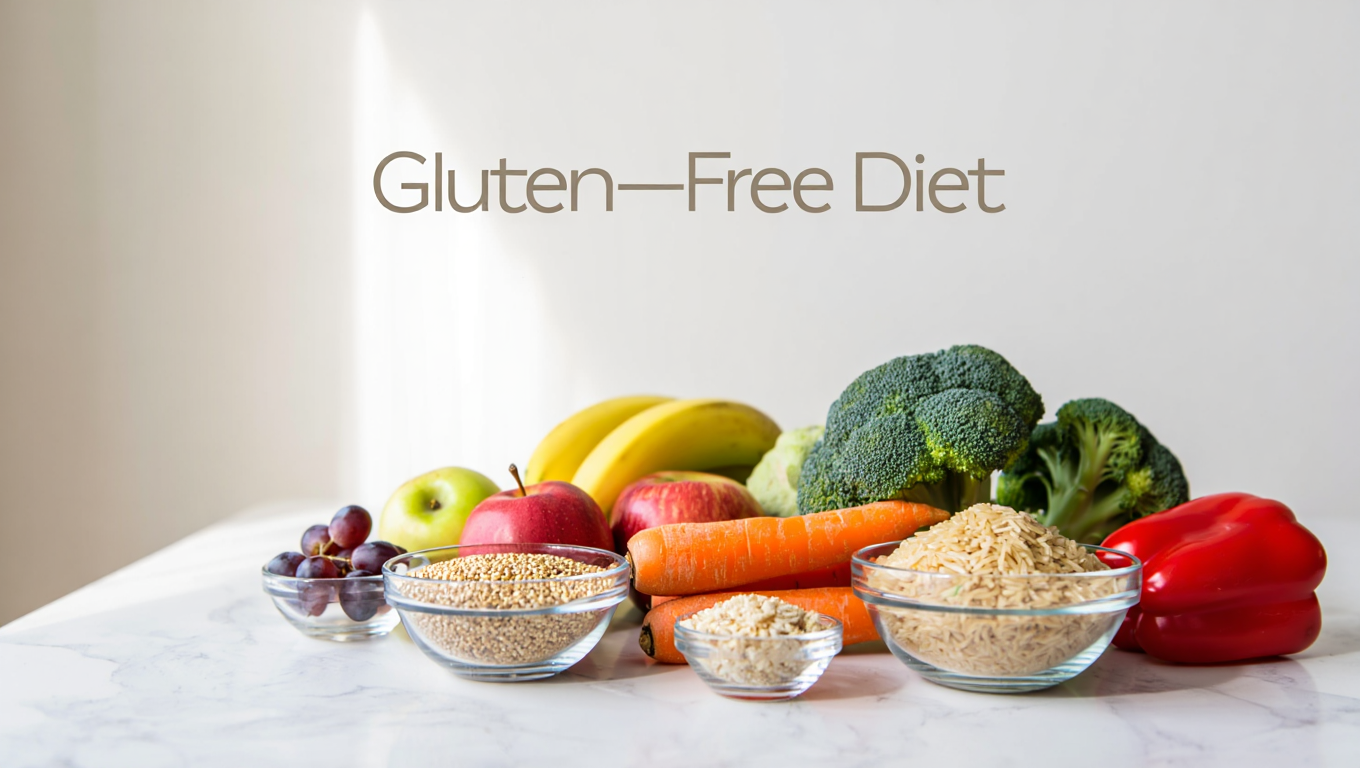Eating gluten-free has never been easier—or tastier. With so many gluten-free options now available in grocery stores, it's simpler to follow this diet than ever before. But what exactly is a gluten-free diet, and who should follow it?
7 Common Questions About Gluten-Free Food
In this article, you'll find answers to the following:
- What is gluten?
- What does gluten-free mean?
- Who should eat gluten-free?
- What are the benefits of a gluten-free diet?
- What are the downsides?
- When should you consider going gluten-free?
- How can you eat gluten-free healthily and easily?
1. What is gluten?
Gluten is a protein found in certain grains, including wheat (including spelt, durum, and kamut), rye, and barley. It gives bread its structure, makes it chewy, and helps it rise.
2. What does gluten-free mean?
A gluten-free diet means avoiding foods that contain gluten. This includes bread, pasta, crackers, and many baked goods made from wheat, rye, or barley. But gluten can also be hidden in processed foods like cookies, sauces, soups, and snacks—so reading labels carefully is a must (see question 7 for more on that).
3. Who should eat gluten-free?
A strict gluten-free diet is necessary for people whose bodies can’t tolerate gluten. A doctor can confirm this with blood tests (see question 6). It’s essential for:
- People with celiac disease, an autoimmune condition—gluten-free eating is a lifelong requirement.
- People with non-celiac gluten sensitivity, who may feel better avoiding gluten.
- Sometimes, those with irritable bowel syndrome (IBS) may be advised by a doctor or dietitian to try a gluten-free diet.
Some people choose to go gluten-free on their own because they feel bloated or sluggish after eating gluten. But it's important to know that whole grains containing gluten also provide valuable nutrients. That’s why a gluten-free diet is recommended only for those who truly need it. If that’s you, a registered dietitian can help you get the nutrients your body still needs—without the gluten.
4. What are the benefits of a gluten-free diet?
For healthy individuals, there’s no proven benefit to cutting out gluten (and some downsides—see question 5).
But if you’ve been diagnosed with celiac disease or gluten sensitivity, removing gluten from your diet can relieve symptoms like stomach pain, fatigue, bloating, and digestive issues. Within a few months, your small intestine can start to heal, helping your body absorb nutrients better. You’ll likely notice more energy and improved overall health.
In short: for those with a medical need, going gluten-free can dramatically improve quality of life. It may also help manage digestive issues like IBS in some cases.
5. What are the downsides?
Going gluten-free isn’t as simple as it sounds—it takes effort and careful planning. If you’re not strict about it, you may still be exposed to small traces of gluten. On the flip side, cutting out gluten-containing grains can lead to nutrient gaps, especially in fiber, B vitamins, and minerals like iodine—often found in fortified breads. That’s why it’s so important to do it right, ideally with guidance from a dietitian.
6. When should you consider going gluten-free?
Think you might have celiac disease or gluten sensitivity? Don’t switch diets just yet—talk to your doctor first. Blood tests can check for gluten antibodies, but they only work if you’re still eating gluten at the time of testing. So keep gluten in your diet until you get tested. If the diagnosis confirms celiac disease or gluten sensitivity, a gluten-free diet can help—and a dietitian can guide you on how to follow it safely and effectively.
7. How can you eat gluten-free the healthy (and easy) way?
If you’re sensitive to gluten, even tiny crumbs can trigger symptoms—so strict avoidance is key.
The good news? Many whole foods are naturally gluten-free: fruits, vegetables, brown rice, eggs, plain nuts, and more. Plus, there’s a growing range of gluten-free breads, snacks, and pasta available in stores.
Look for labels that say “gluten-free” or carry the certified gluten-free symbol (often a crossed-out wheat stalk). These make it easy to enjoy a gluten-free breakfast, lunch, dinner—or even dessert.
At ScrummyChef, you can easily generate recipes by telling our AI assistant that you want a meal free from gluten-containing ingredients. It’s quick, personalized, and perfect for anyone following a gluten-free lifestyle.




